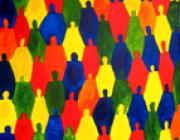Self-organizing urban transportation systems
| Title | Self-organizing urban transportation systems |
| Publication Type | Book Chapter |
| Year of Publication | 2012 |
| Authors | Gershenson, C |
| Editor | Portugali, J, Meyer, H, Stolk, E, Tan, E |
| Book Title | Complexity Theories of Cities Have Come of Age: An Overview with Implications to Urban Planning and Design |
| Pagination | 269-279 |
| Publisher | Springer |
| City | Berlin Heidelberg |
| Abstract | Urban transportation is a complex phenomenon. Since many agents are constantly interacting in parallel, it is difficult to predict the future state of a transportation system. Because of this, optimization techniques tend to give obsolete solutions, as the problem changes before it can be optimized. An alternative lies in seeking adaptive solutions. This adaptation can be achieved with self-organization. In a self-organizing transportation system, the elements of the system follow local rules to achieve a global solution. Like this, when the problem changes the system can adapt by itself to the new configuration. In this chapter, I will review recent, current, and future work on self-organizing transportation systems. Self-organizing traffic lights have proven to improve traffic flow considerably over traditional methods. In public transportation systems, simple rules are being explored to prevent the "equal headway instability" phenomenon. The methods we have used can be also applied to other urban transportation systems and their generality is discussed. |
| URL | http://arxiv.org/abs/0912.1588 |
| DOI | 10.1007/978-3-642-24544-2_15 |
- Log in to post comments
- Google Scholar
- DOI
- BibTeX
- RTF
- Tagged
- MARC
- EndNote XML
- RIS

